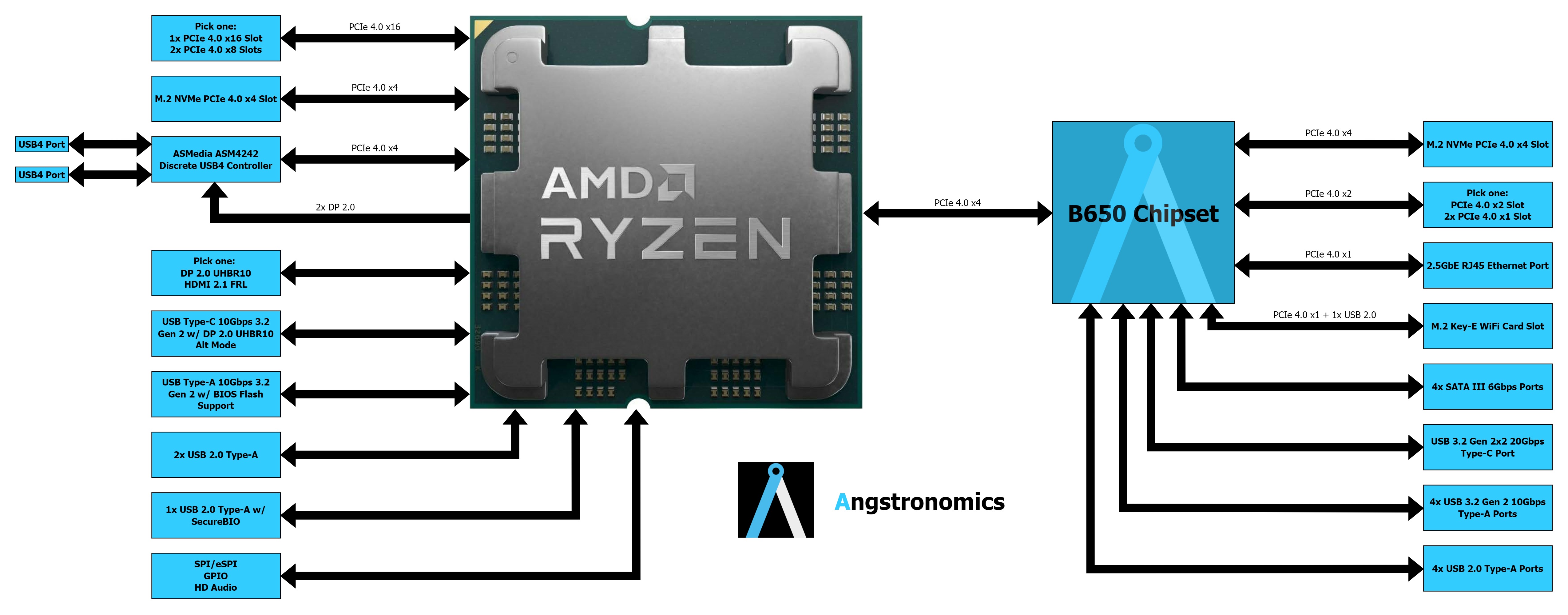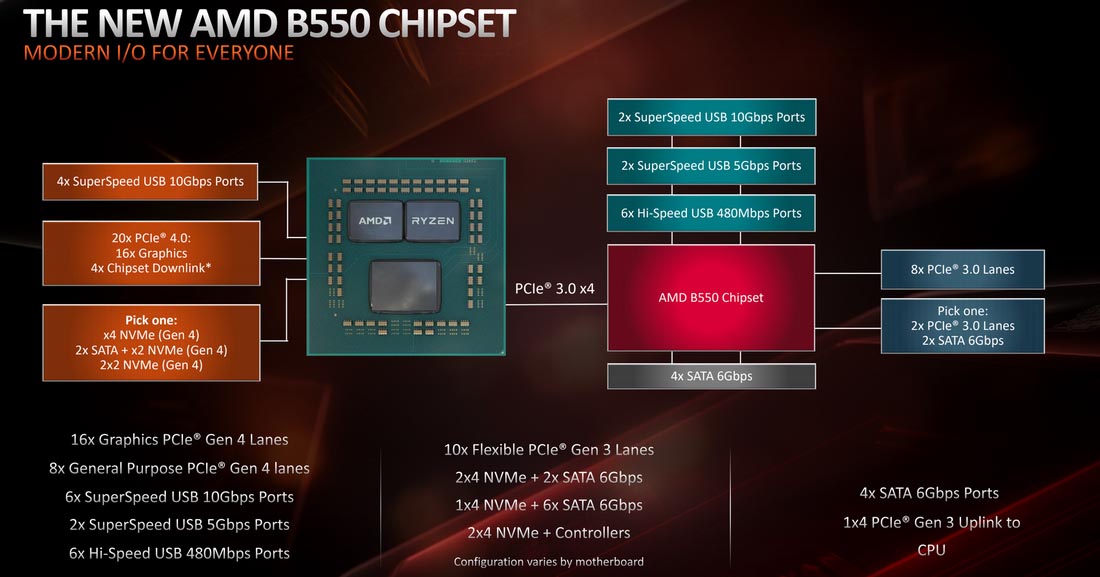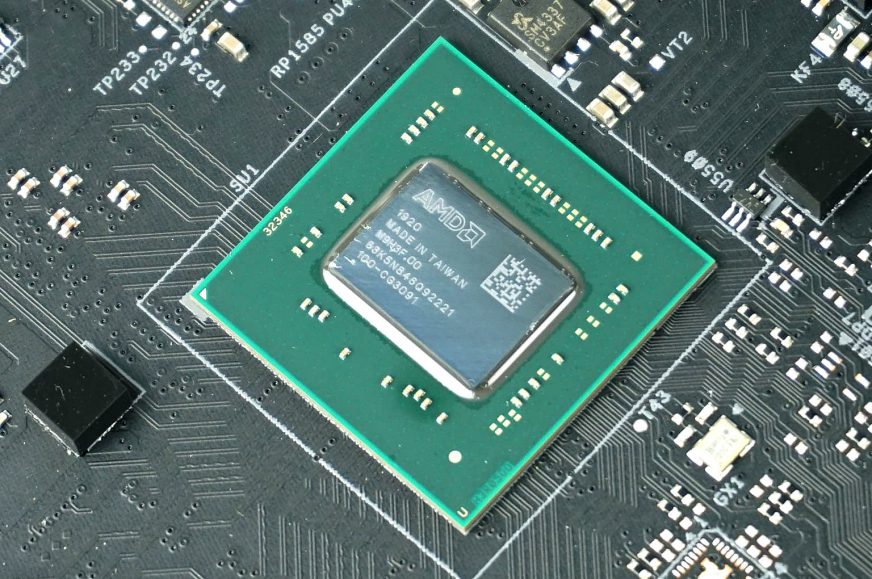The AMD A620 chipset and what you'll lose compared to B650
In recent weeks, information about the upcoming AMD A620 chipset and cheaper AM5 boards for Ryzen 7000 CPUs based on it began to appear. One of the hardware “leakers” shared the alleged specifications that the A620 chipset is supposed to have, and also what will be the other features of the boards built on the chipset. According to earlier reports, these could start selling or at least be revealed as early as this month.
The information comes from a leaker using the chi11eddog handle, who has previously published information about upcoming AMD news which has subsequently been confirmed (and it seems he might have some sources at MSI). Now he has shown a chart that shows the features of the A620 platform compared to boards built on the B650 chipset, which is currently the cheapest (but not that cheap) option in AM5 socket boards.
Ironically, with AMD processor boards, it’s not so much the chipset that matters most, but how the feature bracket based on the chipset limits the connectivity available from the processor, since the most important PCI Express controllers for GPUs and SSDs are already integrated in the processor. According to chi11eddog, the A620 boards won’t limit the number of PCI Express lanes the CPU can provide – up to 28 lanes can be brought out of the CPU, but four will again be taken by the chipset, same as with B650(E) / X670(E).
Where the A620 will be limited compared to B650(E) boards is in speed of these lanes. A620 boards will always support a maximum of PCI Express 4.0, even for SSDs. So you won’t find PCIe 5.0×4 slots for SSDs, which even the cheaper B650 (without the “E” attribute) boards mostly provide. The second limitation is that the GPU lanes cannot be split into ×8/×8 (meaning no CrossFire or SLI support is possible). Thus, the A620 boards can use the Ryzen 7000 processor to provide a PCIe 4.0 ×16 slot for the GPU and two PCIe 4.0 ×4 interfaces. This promises that boards could commonly have two M.2 slots instead of just one which is the usual state on previous A320 and A520 platforms, where it can become a bothersome limitation these days.
And now for the connectivity of the chipset itself. A620 will be connected to the processor via four PCIe 3.0 lanes, so the connection will have only half the bandwidth of the B650(E) that uses PCIe 4.0×4. With this, A620’s uplink will be able to maintain only about 4 GB/s in both directions. At the same time, though, even the lanes coming out of the chipset will use just PCIe 3.0, while the B650 provides some PCIe 4.0 lanes as well. The A620 chipset could reportedly provide up to 8 PCIe 3.0 lines. However, there are no SATA ports listed in the chart.SATA ports could presumably use connectivity shared with PCIe 3.0 lanes and consume some number of PCIe 3.0 lanes and cut into the number that the board can use for expansion slots and additional controllers.
Chipset’s lanes being limited to PCIe 3.0 is not exactly a tragedy, especially for cheap computers. Since PCIe 4.0 is still provided out of the processor and can be used for the most important peripherals (GPU and SSD), this could actually be a good compromise. The fact that the CPU uplink of the A620 chipset and all connectivity and slots connected to the chipset will only run at low PCIe 3.0 speeds should make PCBs cheaper, and therefore lower the overall price of these boards.

USB 20Gbps (3.2 Gen 2×2) missing
The table also lists USB connectivity. This is where A620 will have a more significant downside – it only supports two 10Gbps USB ports (USB 3.2 Gen 2) and two 5Gbps USB ports (USB 3.2 Gen 1 aka USB 3.0), plus just six USB 2.0 ports. The Ryzen 7000 processor can add two more fast USB 10Gbps ports, including USB-C, but overall this connectivity won’t be exactly plentiful on the boards unless the manufacturer includes an additional USB controller or hub.
Anyway, the A620 boards will lack support for 20Gb/s USB ports (USB 3.2 Gen 2×2), but Intel does not offer it on low-end boards with H610 chipset either.
No CPU overclocking, OC RAM will work though
Chi11eddog further confirms that the A620 chipset boards will keep the past practice of the A320 and A520 boards and disallow CPU overclocking. So even though Ryzen 7000 processors are always unlocked, it will not be possible to change the multiplier on these boards and quite possibly not even use Precision Boost Overdrive to increase the power and current limits. Perhaps overclocking via BCLK might be usable, but that only allows a small performance improvement before you lose stability.
But at least memory overclocking will be allowed as that is explicitly said to be supported. So it will be possible to use XMP profiles, AMD EXPO and manually change parameters. A620 boards, like those with B650 and more expensive chipsets, will exclusively use the new DDR5 memory, nothing changes here.

Is this a rebranded B550 chipset?
Just a few days ago, it was reported that AMD will produce the A620 chipset from the same “Promontory 21” silicon that makes up the B650(E) and X670(E) chipsets, but later will start producing a separate smaller silicon that will only have the connectivity that the A620 needs and will be cheaper.
But from these specs, it seems that the A620 chipset could be made from the silicon used by the B550 and A520 chipsets on the AM4 platform. That silicon lacks essentially nothing for this role and importantly, doesn’t have much extra features that would end up being disabled dead weight, either. Its reuse on the AM5 platform could also meet the goal of keeping production costs as low as possible.
The B550 chipset had a PCIe 3.0 ×4 uplink (connection to the CPU) and provided 10 PCIe 3.0 lanes, which could be flexibly reconfigured into SATA ports. It would therefore be suitable and the USB connectivity fits as well – the B550 provided two 10Gb/s ports, two 5Gb/s ports and six USB 2.0 ports, exactly what the A620 is said to provide.

If this older die was used, then the A620 boards could have mostly similar manufacturing costs as AM4 boards with the B550 chipset, however their cost will go up a bit due to using the new LGA socket (which is more expensive), DDR5 support, and also possibly due to use of more expensive VRM components. These new boards may probably require more powerful power delivery for Ryzen 7000 CPUs than what is usually present in the cheap models for the AM4 platform.
However, it is not entirely impossible that AMD (or actually ASMedia through contract) has actually developed a new silicon for the A620 chipset. Theoretically, for example, it could do a “shrink” of the B550/A620 silicon to a slightly more modern process that would reduce the area and cost of production. Alternatively, maybe they could change the package or integrate some more functionality that would eliminate the need for some of the external components that used to be on the boards previously.
Sources: chi11eddog, VideoCardz
English translation and edit by Jozef Dudáš
⠀











